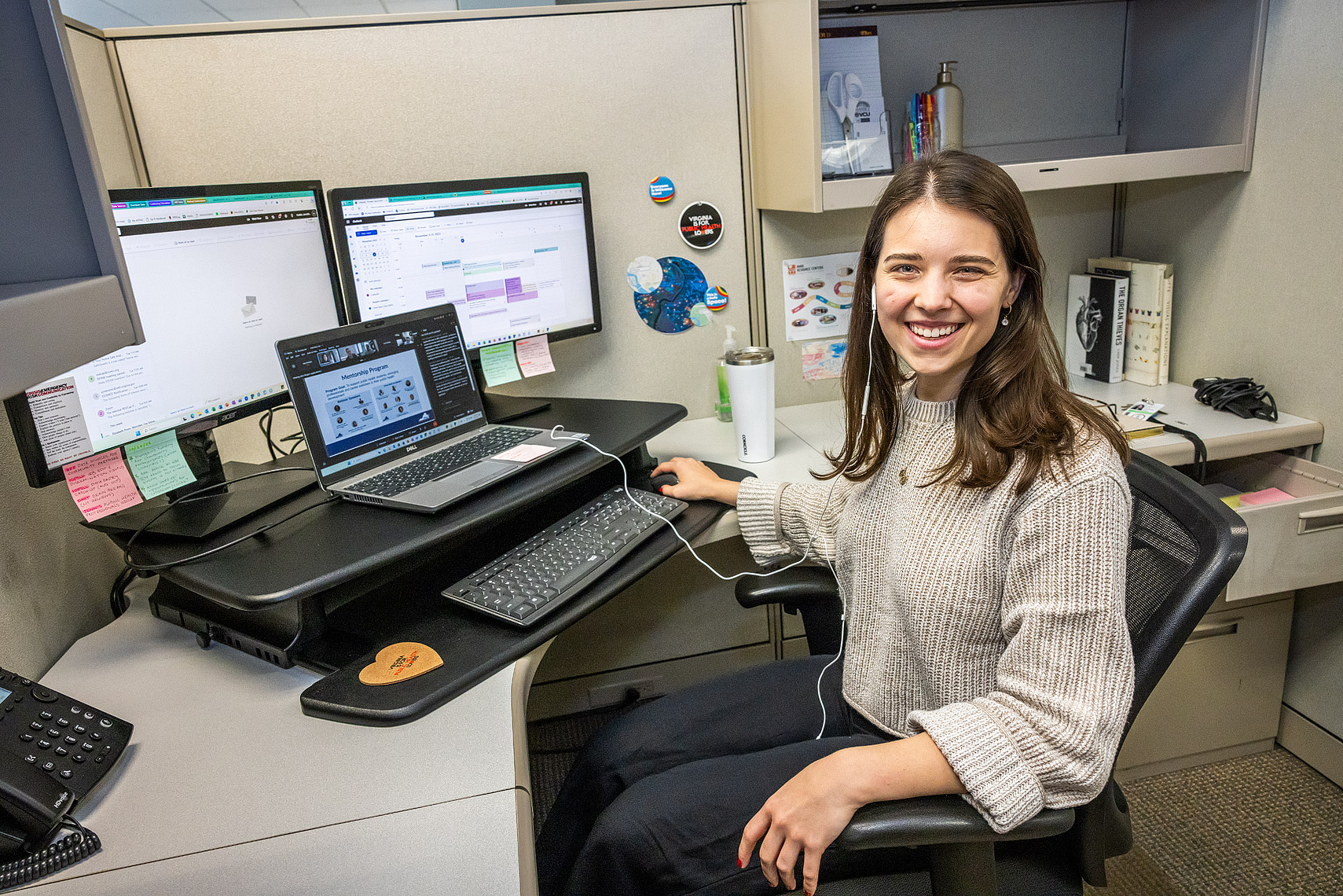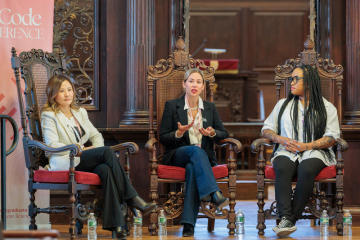
Leadership, teamwork and collaboration, and on-the-job learning emerged as bright spots of the pandemic response, according to three research briefs using data from PH WINS. (Photo credit: Rebecca Drobis)
While much attention has been given to the public health challenges experienced during the COVID-19 pandemic, three new research briefs highlight bright spots that provide valuable insights and lessons from the workforce.
Focusing specifically on positive lessons identified during the analysis conducted for a previous study, “Qualitative Insights from Governmental Public Health Employees About Experiences Serving During the COVID-19 Pandemic, PH WINS 2021,” the three research briefs examine positive workforce experiences with leadership, on-the-job learning, and teamwork and collaboration.
Learn what health departments are doing as they reflect on these bright spots and lessons learned from the pandemic.
Acting on Leadership Insights
The first research brief on leadership lessons provided three general recommendations for public health agencies:
1. Create safe and supportive work environments that foster a sense of comradery among employees at all supervisory levels.
2. Invest in helping public health leaders improve their communications skills.
3. Ensure that all governmental public health executives receive training in change management and strategic thinking to better prepare them to lead their departments during emergent challenges.
Health departments are putting some of these lessons to use. For example, while many agencies have enhanced the risk communication training that leaders receive, some have expanded access to this kind of training beyond the public information officer and the leadership team. Additionally, aligned with findings from the Public Health Workforce Interests and Needs Survey (PH WINS), public health employees perceive a need for improved communication training to support consistent public health messaging during crisis events. Expanding risk communication training throughout different levels of the organization will benefit routine operations and support preparation for emergencies.
Given that subject matter experts across various public health programs may support communication efforts during emergencies, some health departments are ensuring access to risk communication training more broadly. This helps to ensure subject matter and communication experts can effectively translate complex information into actionable public messaging.
Information may change rapidly during emergency events. During the pandemic response, frequent and brief emails from leadership guided and motivated public health employees. This type of communication provides more opportunities for employees to hear directly from agency leadership, and it was reported to have improved their perception of their workplace. After the COVID-19 response, some agencies maintained this format for internal communication to disseminate information directly to employees. Having communication pathways in place will support frontline staff during a crisis response and ensure consistent, up-to-date information is shared with the public and other stakeholders.
Maintaining Internal Teamwork and External Collaboration
Complex public health issues, such as those presented during the pandemic response, require relationships and collaborations both internally and externally. Many health departments excelled in connecting teams across divisions and disciplines during the pandemic, giving employees exposure to areas novel to them. Similarly, employee responses to PH WINS 2021 emphasized teamwork and collaboration as a way to improve workforce satisfaction and innovation and better support future response efforts.
The research brief on teamwork and collaboration suggested that fostering cross-division, internal teamwork beyond emergency response events will be meaningful for governmental public health employee satisfaction and future emergency response events. It also recommended that investing in external collaboration and partnerships should be an ongoing priority for agencies, both in planning for future response events and in the day-to-day work of serving communities.
PH WINS respondents reported that teamwork and collaboration created opportunities for innovation, which was perceived as particularly valuable in the COVID-19 response. Following the pandemic, efforts to improve and maintain teamwork and cross-division collaboration include the development of cross-division and multidisciplinary committees.
For example, the DuPage County Health Department in Illinois established CREW — a committee focused on Creating Recognition, Engagement, and Wellness — to foster collaboration and a commitment to ongoing improvements in the work environment. Many health departments have established Diversity, Equity, and Inclusion committees as well.
There is a critical need for public health agencies to maintain external collaboration and partnerships as well, both for day-to-day work and emergency preparedness planning. The common goals of the pandemic united and strengthened partnerships and collaboration; however, public health agencies now have to maintain connections with community partners in a day-to-day capacity where the collective goals have shifted to other pressing public health issues, such as mental health needs and addiction. The partnerships built and strengthened during the pandemic may enhance health departments’ ability to address these and other threats to their community’s health. Leveraging relationships with the police and fire departments may be meaningful for awareness and outreach campaigns, for example.
Additionally, health departments can include external partners that had previously not been involved in the Community Health Needs Assessment process such as school superintendents and business leaders. Fostering day-to-day relationships with community partners and relevant organizations regarding collective goals may also support determined and consistent public health emergency response efforts.
Consideration for New Skills and Lessons Learned During the Pandemic
The third bright spot brief focused on the opportunities provided through on-the-job learning among employees during the pandemic response. Reflecting on these new skills may be valuable. As such, agencies should specifically ask employees about new technical skills that were gained during emergency response events going forward as a way of capturing what was learned, what they valued most, and what skills need to be expanded for future response events.
As public health agencies continue to adapt following the COVID-19 pandemic response, workforce insights provide practical recommendations for how positive experiences, or bright spots of the response, can inform system improvements and emergency preparedness planning to support employees and agencies overall.
This column first appeared in the November/December 2024 issue of the Journal of Public Health Management & Practice. See the final authenticated version.




